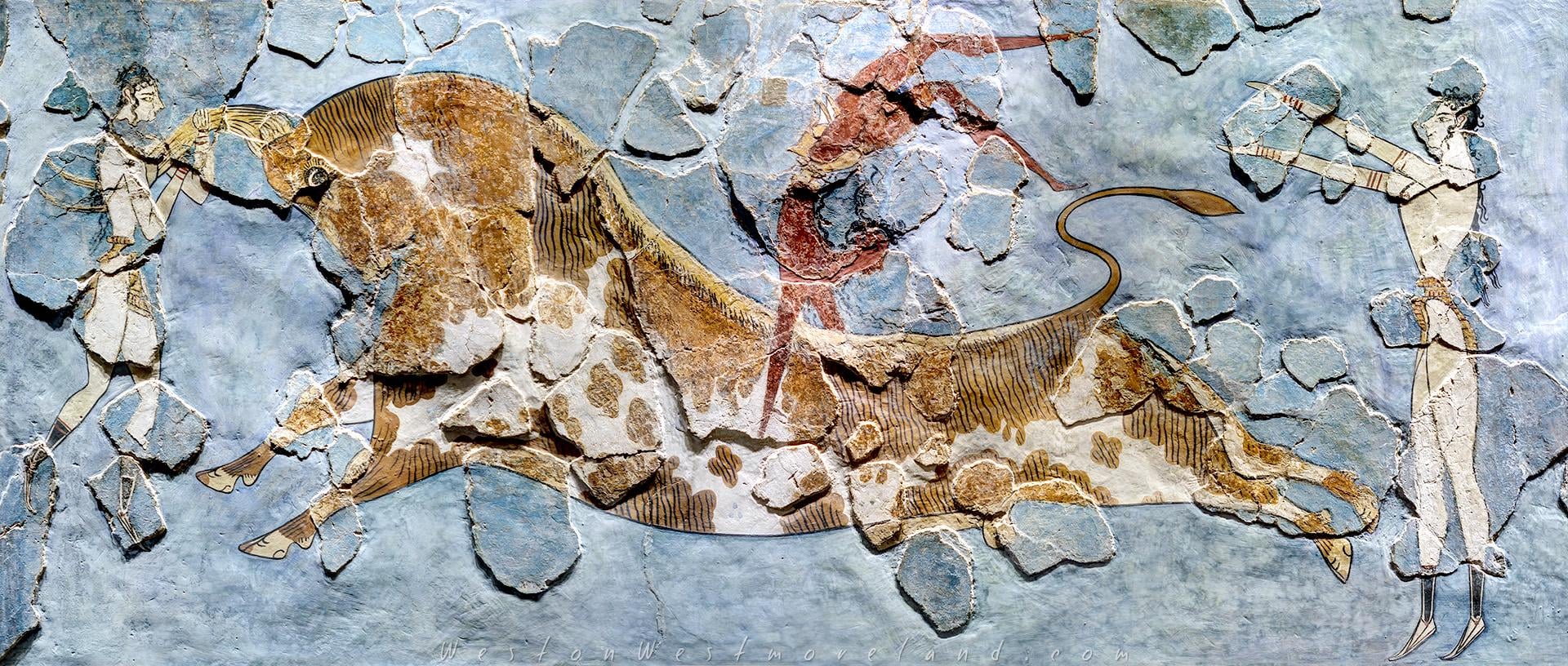
Minoan Bull Leaping Fresco, Crete, 1650 BC. This colorful painting is the most completely restored stucco panel from Knossos Palace. Bull-leaping is considered a key ritual in Minoan religion. As in other Mediterranean civilizations, bulls were venerated and worshiped… [1920×816] [OC]
by WestonWestmoreland

1 Comment
…at the palace of Knossos, the Bull was a widespread symbol.
The iconography of the fresco represents a ritual in which humans literally vaulted over bulls. This ritual is hypothesized to have consisted of an acrobatic leap over a bull. There are three participants, two white-skinned women and a brown-skinned man, consistent on the usual coloration of both genres in frescoes from Crete and Thera. One of the female athletes is restraining the bull by the horns to reduce its speed and prevent the leaper, performing the dangerous backwards somersault, from being gored. The second female athlete, behind the bull, is waiting with outstretched arms to catch the leaper as he lands.
This fresco was created no later than 1600 BC. The flakes of the destroyed panels fell to the ground from the upper story during the destruction of the palace, probably by earthquake.
The Minoan civilization was a Bronze Age Aegean civilization on the island of Crete and other Aegean Islands, flourishing from c. 2700 to c. 1450 BC until a late period of decline, finally ending around 1100 BC.
It represents the first advanced civilization in Europe, leaving behind massive building complexes, tools, stunning artwork, writing systems, and a massive network of trade. The name “Minoan” derives from the mythical King Minos and the identification of the site at Knossos with the labyrinth and the Minotaur.
The Minoan civilization is particularly notable for its large and elaborate palaces up to four stories high, featuring complex plumbing systems and decoration with frescoes. The Minoan period saw extensive trade between Crete, Aegean, and Mediterranean settlements, particularly the Near East. Through their traders and artists, the Minoans’ cultural influence reached beyond Crete to the Cyclades, Egypt, copper-bearing Cyprus, Canaan and the Levantine coast and Anatolia. Some of the best Minoan art is preserved in the city of Akrotiri on the island of Santorini, which was destroyed by the Minoan eruption.
The Minoans primarily wrote in the undeciphered Linear A and also in undeciphered Cretan hieroglyphs. The reasons for the slow decline of the Minoan civilization, beginning around 1550 BC, are unclear, including Mycenaean invasions from mainland Greece and the major volcanic eruption of Santorini.
As usual my apologies for inaccuracies and mistakes.